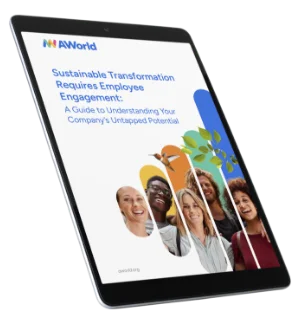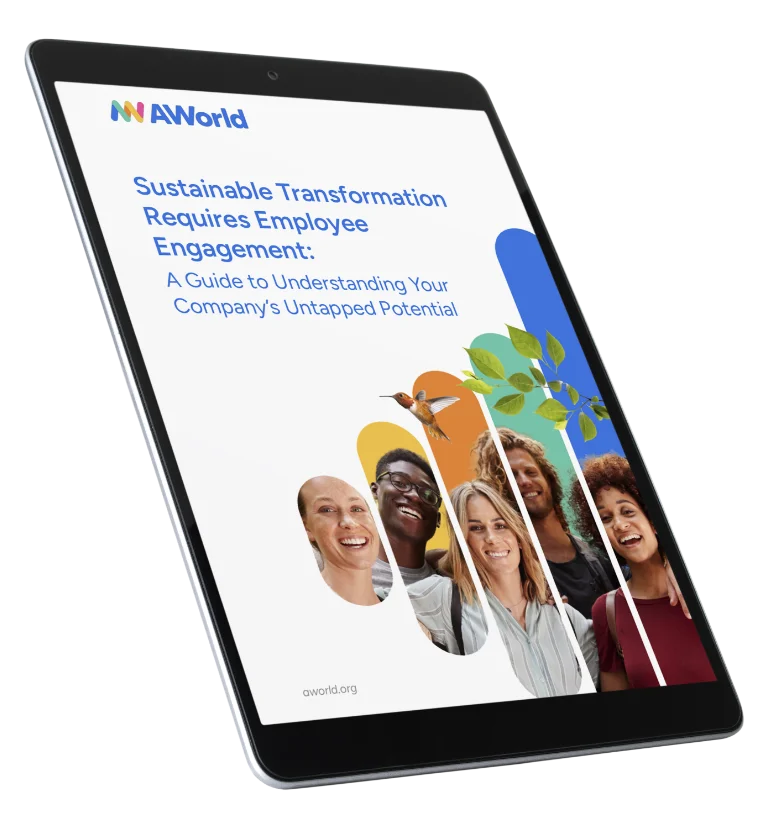A company adopting environmental sustainability practices is one that recognizes its footprint extends beyond the office doors, manufacturing floors or virtual marketplaces.
It’s a company that sees its role in the larger environmental context and commits to responsible stewardship of resources.
Your company’s transition to sustainability is not just a matter of risk mitigation or compliance, it is an opportunity: an opportunity to innovate, to differentiate and to ensure a lasting legacy for future generations.
Read on and enter the world of sustainable business practices: discover why and how to implement them and be part of the change!
Table of Contents
- The Importance of Corporate Sustainability Practices
- Building a Sustainable Team: Key Players in an Organization’s Green Journey?
- 10 Transformative Business Practices for Sustainability
- Lessons from the Pioneers: Corporate Sustainability Case Studies
- Overcoming Challenges in Sustainability Implementation
- The Importance of Measurement and Reporting in Sustainability
- AWorld: Partnering with You on Your Sustainability Transition
The Importance of Corporate Sustainability Practices
The adoption of sustainable practices at the corporate level is essential, especially because of the significant environmental impact businesses generate. Companies can play a crucial role in conserving natural resources, reducing waste and pollution and combating climate change. Therefore, we can see why they are being held accountable to comply with stringent environmental regulations set by global organizations.
But sustainable practices are not just about compliance and respect for the environment. Sustainability can also be synonymous with efficiency, as it saves costs by minimizing waste and improving resource management.
Moreover, sustainable companies are the most attractive to an environmentally aware investor sector, which sees sustainability as an indicator of risk reduction and long-term profitability. What’s more, consumer preferences are also shifting towards brands that prioritize the environment, which can boost sales and build brand loyalty.
Building a Sustainable Team: Key Players in an Organization’s Green Journey
Embedding sustainability practices within your company requires the involvement of different roles. First and foremost, it obviously requires the commitment of the leadership team, including executives and the board of directors, who are instrumental in guiding the company towards a sustainable future.
For larger companies, a dedicated sustainability department can be critical in orchestrating and monitoring sustainability initiatives. Operations teams play an active role in executing sustainable practices in the field, optimizing resource use and managing waste. Human resources play a key role in embedding sustainability into the corporate culture through training programmes and employee engagement.
Indeed, every employee has a role to play in achieving sustainability goals and their active participation is crucial.
10 Transformative Business Practices for Sustainability
From reducing waste to embracing renewable energy, there are myriad ways companies can make a difference. Below, we outline ten practical measures that can be woven into the fabric of corporate operations, each with its unique benefits and approaches.
Renewable Energy Transition
Embracing renewable energy sources like solar and wind is a definitive step toward cutting down carbon emissions. By transitioning to renewables, companies can secure energy at a predictable cost, contribute to energy independence, and showcase their commitment to a sustainable future.
Waste Reduction Programs
By minimizing waste through recycling and composting initiatives, companies can significantly lower their environmental impact. Reducing waste not only conserves natural resources and energy but also decreases disposal costs and underscores a company’s dedication to sustainability.
Sustainable Sourcing
Choosing suppliers who prioritize sustainability ensures that the environmental footprint of the products is minimized. This practice encourages ethical production, supports fair labor practices and fosters a greener supply chain.
Water Conservation Measures
Efficient water use, through technologies such as low-flow fixtures and rainwater harvesting, can dramatically reduce a company’s water footprint. Conserving water preserves a critical resource, reduces bills and demonstrates a commitment to environmental stewardship.
Green Building Certification
Adopting green building standards ensures that company facilities are energy-efficient and resource-conservative. This not only provides a healthier work environment but can also lead to lower operating costs and increased property values.
Telecommuting and Flexible Work
By allowing employees to work from home or adopt flexible schedules, companies can lessen the environmental impact of daily commutes. This flexibility can lead to improved employee satisfaction, reduced office expenses and lower carbon emissions.
Energy Efficiency Upgrades
Investing in energy-efficient technology is a cost-effective measure that reduces long-term operational costs. Upgraded systems use less energy, decrease greenhouse gas emissions and can improve the company’s bottom line.
Eco-friendly Product Design
Designing products with the environment in mind reduces the ecological footprint and appeals to eco-conscious consumers. This can increase marketability, reduce waste and encourage the recycling and reuse of materials.
Carbon Footprint Reduction
Setting and pursuing aggressive carbon reduction targets positions a company as an environmental leader. Actions may include enhancing efficiency, using sustainable materials and investing in carbon offsetting, which can improve brand image and customer loyalty.
Employee Engagement and Incentives
Empowering employees to participate in environmental initiatives fosters a culture of sustainability. Incentivizing sustainable practices can unleash creativity, promote a sense of ownership and lead to innovative solutions that benefit both the company and the environment.
Lessons from the Pioneers: Corporate Sustainability Case Studies
The following case studies provide an overview of the different approaches taken by leading global companies to address sustainability challenges.
These companies not only exemplify their commitment to the planet, but also demonstrate that sustainable practices can improve a company’s resilience, customer loyalty and brand strength in the marketplace.
- IKEA: Investment in Renewable Energy
IKEA has committed to becoming “climate positive” by 2030 by reducing greenhouse gas emissions. The company has invested heavily in wind and solar energy, purchasing several wind farms and installing solar panels on the roofs of its shops and warehouses. This commitment not only helps reduce carbon emissions, but also stabilizes energy costs for the company. - Walmart: Waste Reduction and Sustainability
Walmart, one of the world’s largest retailers, has launched a zero-waste initiative, with the goal of producing zero waste by 2025. The company has made strides by optimizing its supply chains, improving packaging efficiency and working with suppliers to reduce packaging waste. Walmart has also set ambitious sustainability goals, such as sourcing 100% of its electricity from renewable sources. - Google: Green Building and Energy Efficiency
Google has been a leader in sustainable office design, building some of the most energy-efficient data centers in the world. The tech giant has also been carbon neutral since 2007 and is committed to operating with carbon-free energy 24/7 in all its data centers and campuses worldwide by 2030.
Overcoming Challenges in Sustainability Implementation
The road to integrating sustainable practices in the company is often strewn with obstacles, ranging from initial financial outlay to resistance to change.
Overcoming these challenges requires a multifaceted approach. Financial obstacles can be mitigated by a gradual implementation of sustainability initiatives, starting with low-impact activities that provide a quick return on investment, such as energy efficiency measures, which can then finance more significant projects.
Resistance to change by employees can be addressed through training and engagement programmes that emphasize the personal and collective benefits of sustainable practices, linking them to performance metrics and business success. In this, gamification strategies can prove an excellent ally in making participation in sustainability initiatives more engaging.
Regular updates on the company’s sustainability progress and an inclusive decision-making process can further enhance company-wide engagement.
The Importance of Measurement and Reporting in Sustainability
Random acts of sustainability do not equate to a coherent strategy. Sustainability initiatives must be accurately measured, managed and reported.
Defining clear KPIs and regularly verifying performance against these benchmarks ensures accountability and enables informed decision-making.
Accurate reporting not only meets regulatory requirements, but also builds trust with consumers and stakeholders, who are eager to support companies with verifiable green credentials.
AWorld: Partnering with You on Your Sustainability Transition
Amidst the complexities of initiating and monitoring sustainability practices, AWorld emerges as a valuable ally. This innovative platform offers companies a way to engage employees, monitor sustainability efforts and provide educational content. It transforms individual actions into collective progress, fostering a community of like-minded people committed to making a difference. With AWorld, the journey towards sustainability is not a solitary excursion but a shared expedition, where every step is measured, recorded and celebrated.






